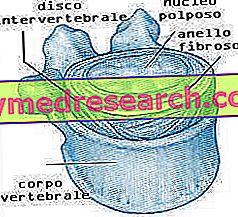LIOTIR ® a sodium-based lyothrinin drug
THERAPEUTIC GROUP: Thyroid preparations
IndicationsAction mechanismStudies and clinical effectiveness Usage and dosage instructionsWarnings Pregnancy and lactationInteractionsContraindicationsUndesirable effects

Indications LIOTIR ® Liothyronine sodium
LIOTIR ® used in the treatment of hypothyroidism.
Its particular pharmacokinetic characteristics make it particularly indicated in the initial phase of therapy.
Mechanism of action LIOTIR ® Liothyronine sodium
Liothyronine, commonly known as triiodothyronine, contained in LIOTIR ® represents the biologically active form of thyroid hormones, characterized by a high efficacy of action and a particularly rapid metabolism ideal in the treatment of early stages of hypothyroidism.
In a decidedly more effective way than the one observed for levothyroxine, liothyronine can interact with its nuclear receptor controlling different aspects of metabolism such as:
- Lipid and cholesterol metabolism;
- Protein synthesis and muscle growth;
- Bone metabolism;
- Basal thermogenesis and metabolism;
- Cardiovascular activity.
It is therefore evident that deficiencies of these hormones inevitably have repercussions on the patient's general state of health, giving rise to an intense symptomatic picture.
The therapeutic activity of LIOTIR ® is observed a few hours after the oral intake of the drug, and is prolonged for about 48 hours, after which it is metabolised to the liver level and eliminated through the faeces.
Studies carried out and clinical efficacy
1. ANTIDEPRESSIVE ROLE OF TRIODIOTIRONINA
Different studies support the important role of triiodothyronine in enhancing the antidepressant effects of some drugs. This approach could be important in the treatment of major depression poorly responsive to common antidepressant therapy.
2. TRIIODIOTIRONINA AND CARDIAC DIFFERENTIATION
Very interesting in vitro study that shows how liothyronine can determine a significant increase in myocardiocyte differentiation and activity. This important mechanism could justify the fundamental role of thyroid hormones in the development and health of the cardiovascular system.
3. THYROID AND OVERWEIGHT HORMONES
Interesting prospective study that shows that overweight individuals generally present blood concentrations of thyroid hormones lower than normal, although always within the limits. This aspect is particularly important in assessing the cause-effect link between overweight and reduced thyroid function.
Method of use and dosage
LIOTIR ® 20 mcg / ml drops of liothyronine sodium:
the treatment of hypothyroidism with LIOTIR ® should be carried out under strict medical supervision, and the dosage used should be established only after a careful evaluation of the patient's physiopathological conditions.
Consequently, despite the presence of a defined therapeutic range of 10 to 100 mcg of liothyronine per day, the specific dose may vary significantly from patient to patient.
Warnings LIOTIR ® Liothyronine sodium
Thyroid hormone therapy and, in general, that with liothyronine should be preceded by a careful clinical evaluation of the patient's state of health, and accompanied by periodic monitoring of some blood chemistry parameters.
More precisely, the serum evaluation of TSH concentrations should be used as an index of therapeutic efficacy, while that of transaminases is a useful parameter to evaluate the safety of the therapy.
careful medical supervision and a gradual increase in dosage are required in patients with cardiovascular diseases and disorders.
The typical pharmacokinetic and pharmacodynamic characteristics make the liothyronine particularly suitable for the initial therapeutic approach, while the maintenance of the therapy could be guaranteed by levothyroxine.
In any case, some side effects such as headache, hyperexcitability and tremors associated with LIOTIR ® therapy could make the use of machinery or driving vehicles dangerous.
PREGNANCY AND BREASTFEEDING
Hypothyroidism in pregnancy is a fairly frequent pathology that needs adequate therapy to safeguard both maternal and fetal health.
Although thyroid hormones are able to cross, albeit minimally, the placental barrier and be secreted in breast milk, the exogenous administration of these drugs remains at present the only possible therapeutic approach.
Several studies show that a well-calculated therapy can be effective and safe for the health of the unborn child.
Interactions
The central role of thyroid hormones in the regulation of metabolism exposes liothyronine to numerous possible interactions with different active ingredients.
A classic example is provided by the reduction of the therapeutic effect of hypoglycemic and coumarin derivatives following the concomitant use of triiodothyronine, and on the contrary by the variation of the therapeutic capacity of liothyronine following the simultaneous administration of colestyramine, drugs containing aluminum, iron and calcium salicylates, dicumarol, furosemide, clofibrate, phenytoin, glucoriticoids, beta-simpaticolitici, amiodarone and iodinated contrast agents, estrogens, barbiturates, proguanil, antiepiliectics and soy-containing compounds.
In both cases therefore it should be necessary to resort to an adjustment of the dosage used.
Contraindications LIOTIR ® Liothyronine sodium
LIOTIR ® contraindicated in cases of uncompensated heart failure, adrenal pathologies, thyrotoxicosis and hypersensitivity to the active ingredient or one of its excipients.
Undesirable effects - Side effects
The important therapeutic efficacy of liothyronine could be responsible, especially in the initial phases of therapy, for a complex symptomatic picture attributable to hyperthyroidism.
More precisely, cardiovascular symptoms such as anginal pain, arrhythmia and hypertension, osteo-muscular symptoms such as cramps, asthenia and osteoporosis, abdominal pains, hot flushes and sweating have been described both in the initial phases of therapy and after taking particularly high dosages .
Note
LIOTIR ® sold only under medical prescription.
re-enters the doping class: Hormones and related substances (prohibited in and out of the race).



